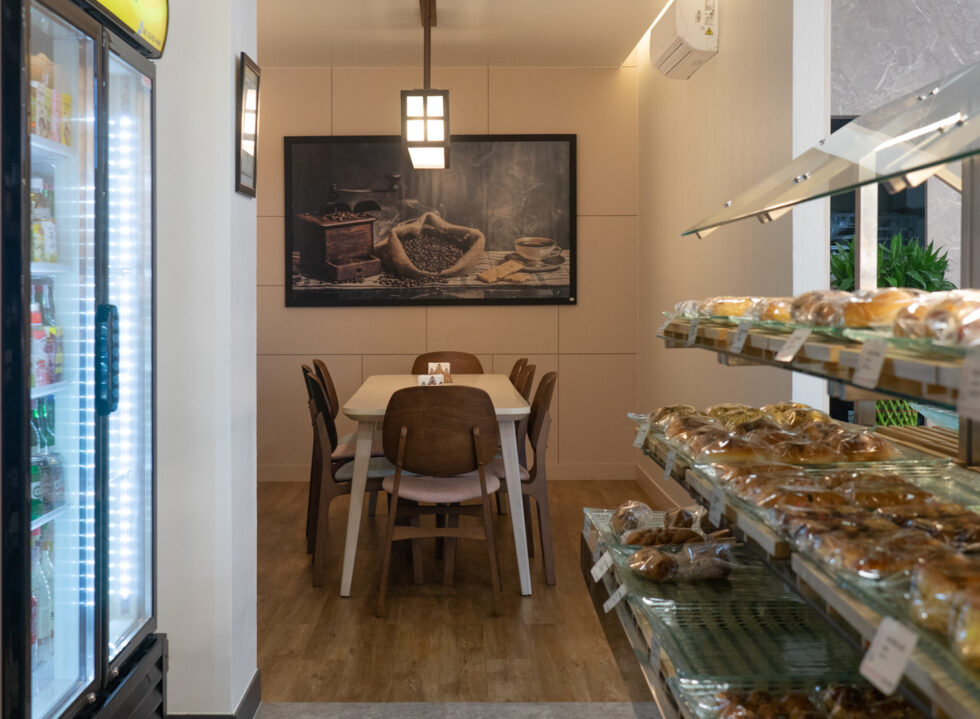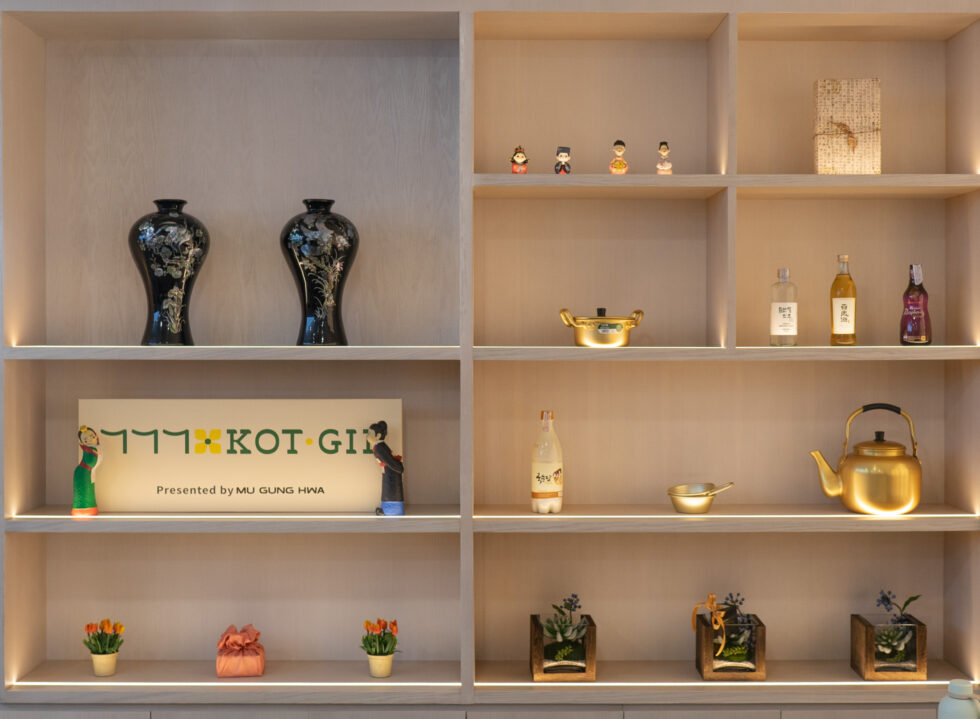Like clockwork, Kot Gil would see a consistent flow of hungry diners grabbing a table at lunchtime. It’s a normal sight for the recently revamped eatery, which has been serving bunsik (a category of Korean snacks and comfort dishes) at the long-standing Korean supermarket on Senayan Street, Mu Gung Hwa.
Previously occupying the corner area of the market, Kot Gil has now relocated to the second floor with a bigger space and a decorated dining setup. The new name Kot Gil (drawn from a Korean literary expression “only walk on a road filled with flowers”), together with other cultural elements infused into the restaurant’s design, are part of the fresh lift that has been taking place under Yang Soo Ryeo, also known as Ibu Soo, the CEO of Kot Gil and Chief Creative Officer of Mu Gung Hwa.
A pattern of stone wall recurs throughout the brightly-lit dining space, a reference to the 900 metres-long picturesque walkway, Deoksugung Doldam-Gil (Deoksugung Stone Wall Path), in Seoul. The roof tiles that characterise Korean traditional houses also make an appearance near the cashier counter, while the wood cabinet displays memorabilia unique to the Korean peninsula; there’s a bottle of fermented rice wine (makgeolli) along with the traditional makgeolli bowl and pot, and the wrapping silk cloth of bojagi, which is traditionally used to carry food and gifts.
It’s a pleasant touch that further connects Kot Gil to its Korean roots. But those who keep returning most likely go back for the comforting taste that a simple, yet richly flavoured Korean comfort dish can instantly bring to satisfy the craving or the nostalgia, or both.
From the scalding bowl of sundubu jjigae, a silken tofu stew fired with Korean chilli flakes, and the crunchy meat and vegetable fillings of bulgogi kimbap (rice rolls), to the mildly sweet, spicy and chewy bite of tteokpoki (rice cakes), they are the type of snacks and dishes that carry a certain familiarity of flavours that most Koreans know by heart; for locals, it’s the similarity in taste buds that Indonesians and Koreans share, especially when it comes to the use of spices.
The open kitchen also takes a look into the swift yet precise hands of the cooks who have been working in Mu Gung Hwa for years; the head chef Ibu Titik, for example, has been working at the market for close to 20 years and is now one of their trusted staff members. Naturally, there’s the wisdom of time and experience within Mu Gung Hwa, and this effortlessly flows to Kot Gil. Further thriving in its understated quality, the eatery also understands that sometimes, all one needs is that comforting bowl and familiar tang of their favourite Korean dish to feel at ease.





















